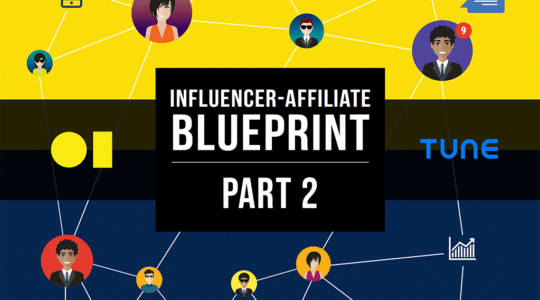
As someone who has been part of the performance advertising ecosystem for quite some time, over the past few years it has been a revelation seeing the addition of a new tool to the performance marketer’s arsenal: video ads.
Video advertising has come a long, long way, from being just an ad unit meant to help old school television advertisers (yep, that’s the world’s first video ad) board the digital bandwagon, to being part of the marketer’s core toolkit for both branding and performance campaigns. Let’s dive into how video is impacting the industry, how to approach the medium, and how to address its challenges.
Video ads are high-performing
First, some numbers:
- Online video ad revenue was due to hit $5 billion by the end of 2016 on top of a huge rise in views served, with the U.S. contributing 35 billion views
- With a high click-through rate of 1.84%, video leaves other ad units far behind (average for display ads is 0.35%)
- 55% of people watch videos online every day
These and many other statistics clearly demonstrate how important video is for marketers, and why it’s important to have a deep understanding of the medium.
Video wasn’t always big. Over the years, things have changed in ways that support video advertising. We need to look at broad global trends to understand why:
- Better connectivity and falling 3G/4G costs
- Better handsets and worldwide smartphone adoption
- Increases in inventory available to serve video ads
- Better format, pricing model, and analytics options for marketers
- And much more …
Enough and more has been said about how well video advertising is working on the branding side of marketing. What might come as a surprise to some is how successfully video advertising has transitioned to the performance side of the business.
Here is a rough checklist of what you should watch out for as a performance advertiser dabbling in mobile advertising.
Creative
- Be clear-cut — Most of your users will be coming from mobile devices, and keeping their attention is critical.
- Do not adapt creatives from TV — Create new content specifically for mobile and desktop.
- Length — The world is moving from 30-second non-skippable ads to the latest 6-second creative from YouTube. Trying to get your point across in that time is a challenge, but the trend can’t be ignored.
- Be disruptive with content, not with the ad unit.
- In the end, it’s all about creating videos that are engaging, relatable, and authentic.
Where to run
- Choosing which platform to run with from the plethora of options available (e.g. social, DSPs, ad networks, direct publishers both large and long tail) is a challenge. You need to pick wisely, so ask away:
- Does the platform support a pricing model that works for you?
- Are their ad formats unique and engaging?
- Do they provide you with detailed reports and analytics?
- How can you target and slice and dice their inventory to reach your specific audience?
- Are they cross-platform?
Setting KPIs
- As a performance marketer, you should be able to track and monitor the user’s journey. For example, if your objective is to drive user acquisition on your apps, you should be able to track and attribute hard numbers and goals to the following:
- Ad views (What % of the video was viewed, quartile-based reporting)
- Ad clicks (click-through rate/CTR)
- Visits to your mobile web, desktop, or app store page
- App installs (Conversion rate)
- Post app install, completing a transaction or performing another action in-app
- And at the end of the day, tracking and connecting users acquired through video advertising to a LTV number
- So make sure that you have the relevant numbers and goals in place and that you have communicated them to your video advertising partner.
Challenges
- Making sure that the message is relevant to the target audience. Think Pepsi’s oops moment with Kendall Jenner.
- Having your video ad served on objectionable content. AT&T and Verizon pulled millions in ads from Google and YouTube due to hate and terrorist content.
- Bandwidth is still scarce, especially in the developing world, and video ads are taking a toll on user data caps. This could alienate users.
- The challenge of user-generated content vs curated content. We’re starting to see a shift back to professional content.
- Ad blocking is on the rise, and it’s moving to the video ad industry.
- Fraud, like these hackers making $5 million a day by faking video views.
So, like any other young and up-and-coming industry, video has its own specific set of challenges — but you can bet the story is just getting started.
Ending with a Seth Godin quote: Marketing is no longer about the stuff that you make, but about the stories you tell (and adding that nothing tells the story better than video!).
Author
Becky is the Senior Content Marketing Manager at TUNE. Before TUNE, she handled content strategy and marketing communications at several tech startups in the Bay Area. Becky received her bachelor's degree in English from Wake Forest University. After a decade in San Francisco and Seattle, she has returned home to Charleston, SC, where you can find her strolling through Hampton Park with her pup and enjoying the simple things between adventures with friends and family.



![Buy vs DIY: The Pros and Cons of Buying vs Developing Your Tracking Platform [Infographic]](https://www.tune.com/wp-content/uploads/2018/01/Blog-4-540x300.jpg)
Leave a Reply
You must be logged in to post a comment.